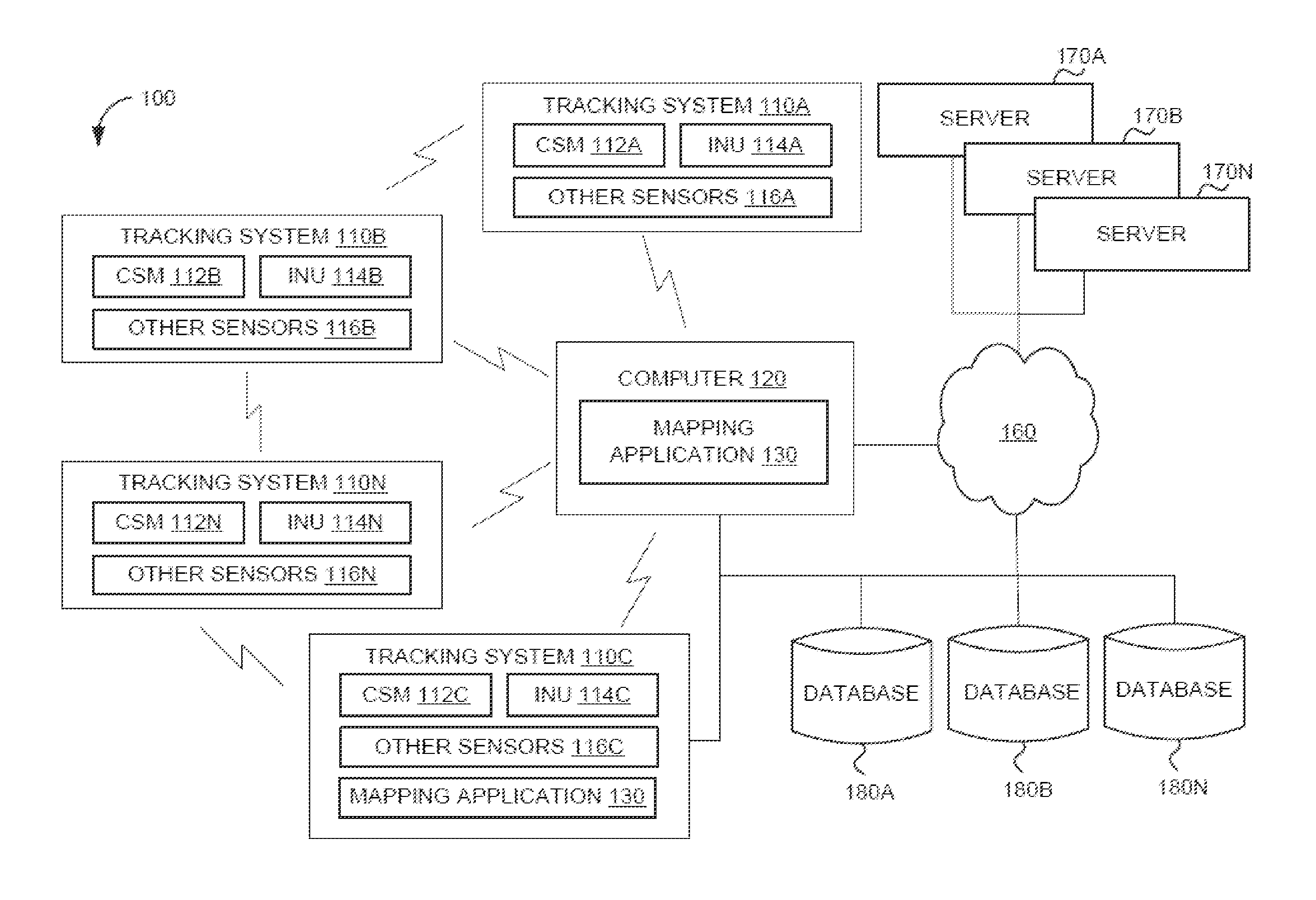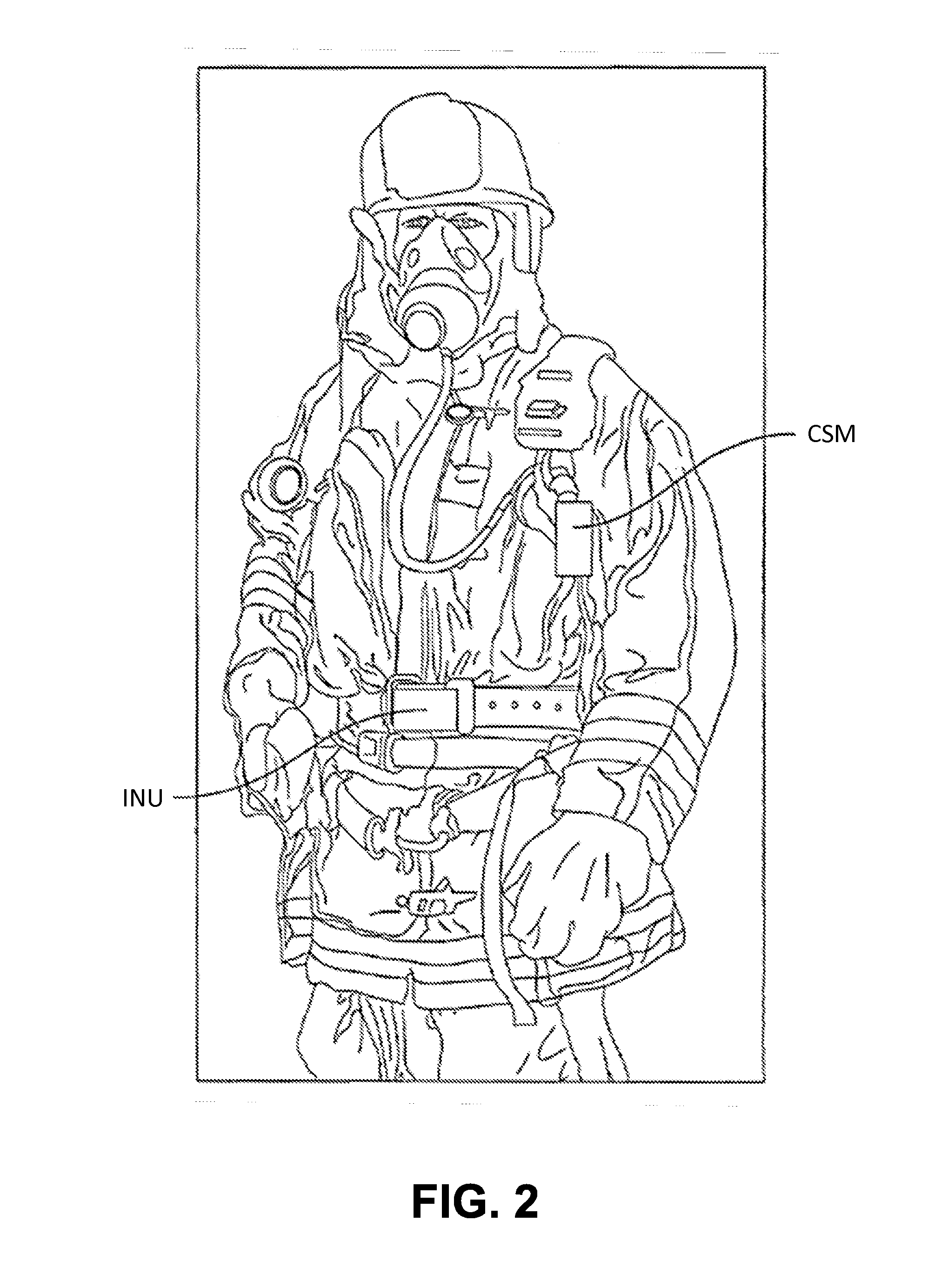System and method for localizing a trackee at a location and mapping the location using inertial sensor information
a technology of inertial sensor information and localization method, which is applied in traffic control systems, navigation instruments, instruments, etc., can solve problems such as inability to trust information, continuous decrease in quality, and cumulative errors, and achieve the effect of facilitating longer duration navigation
- Summary
- Abstract
- Description
- Claims
- Application Information
AI Technical Summary
Benefits of technology
Problems solved by technology
Method used
Image
Examples
Embodiment Construction
[0062]The invention described herein is directed to systems, computer program products, and methods for both localizing a trackee at a location and mapping the location using sensor information obtained from inertial sensors. By way of background, “personnel,” as used herein, may refer broadly (and without limitation) to living entities (e.g., people, animals, etc.), while “assets” may refer broadly (and without limitation) to objects including, for example, those being moved or controlled by personnel as well as autonomous objects such as robots. A person (or other example of personnel) and an asset may also each be referred to herein more broadly as a “subject,” a “trackee,” a “target,”“a user” or another similar descriptor. In some instances, the mapping application may be referred to interchangeably herein as “mapping software” or “mapping technology.”
[0063]Exemplary System Architecture
[0064]FIG. 1 depicts an exemplary architecture for a system 100, according to an aspect of the...
PUM
 Login to View More
Login to View More Abstract
Description
Claims
Application Information
 Login to View More
Login to View More - R&D
- Intellectual Property
- Life Sciences
- Materials
- Tech Scout
- Unparalleled Data Quality
- Higher Quality Content
- 60% Fewer Hallucinations
Browse by: Latest US Patents, China's latest patents, Technical Efficacy Thesaurus, Application Domain, Technology Topic, Popular Technical Reports.
© 2025 PatSnap. All rights reserved.Legal|Privacy policy|Modern Slavery Act Transparency Statement|Sitemap|About US| Contact US: help@patsnap.com



